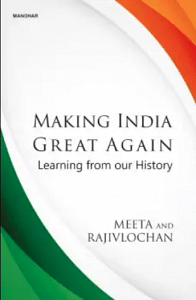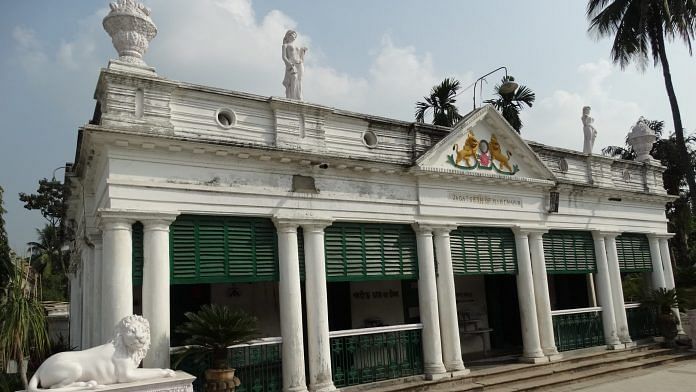When we look back at our history, we find that India did have a reasonably well-developed money market and credit instruments around the time that the English East India Company entered the country. By the end of Aurangzeb’s reign in the seventeenth century, bankers had begun to play an important role even in the collection and transmission of taxes. Some of them had the license to mint money, which is entirely in line with Indian tradition.
What was missing was a relationship of trust and collaboration between bankers and rulers. Once in a while, a few individuals would obtain greater benefits for themselves and make more money. But there was little by way of sustained institutionalized dialogue between the two groups.
When we look back at Indian history, we find that merchants and princes have had cordial relations on many occasions. Merchants have even held important positions in state machinery whether it was Pushyagupta, the governor of Gujarat in the time of the Mauryas or the various positions held by merchants in Mughal administration. What remained missing was anything more systematic that would ensure that the authority of the state synergized with the needs of business and industry.
Moving forward in time, various Mughal nobles, emperors and local kings, depended upon bankers to meet their credit needs to conduct war and run the administration. Such needs were met through two kinds of strategies—farming out revenue collection in large territories and in obtaining loans from moneylenders. We see this phenomenon in the Bengal subah in eastern India, in Surat and Rajasthan in western India where records are available. But this relationship was never institutionalized. In other countries, monarchs used their constant need for loans, to set-up a centralized bank; not so in India.
The role of the state in wealth creation, has been rather marginal in India. They say that exceptions prove the rule. One such exception is a story from eighteenth-century Bengal: the story of Seth Manikchand and Diwan Murshid Quli Khan.
It is indeed heartening to know that there was someone like Manikchand, a big banker of Bengal, whose banking house got the title Jagat Seth who intuitively knew, 300 years ago, what many modern businessmen do not seem to even today: that dialogue and policy support are important for business.
You might ask why we should care about individual exceptions of this variety. We should care because the story of these remarkable characters is tied up in an important way with the history of the province of Bengal and also with the history of India. So long as the alliance between the businessman and the state succeeded, Bengal remained one of the richest provinces of the country. Was it entirely a matter of coincidence that once that alliance broke down, Bengal was ruined and the way was laid open for the domination of India by the English East India Company?
Also read: English plunderer, social psychopath or hero? Why Indians have misunderstood Robert Clive
In this story we shall see that Manikchand seems to have instinctively recognized the value of government support for expanding his business. Not so his successor Mehtab Rai who seemed to be indifferent to the ones who ruled. So when a chance did emerge in Bengal, instead of grabbing the chance to rule he much preferred to ask the East India Company to do so. Little did he notice that the East India Company whom he seemed to regard as just another client, was in fact a rival in trade. And the idea that by providing the company access to resources of the state, he was surrendering invaluable competitive advantage, he didn’t take cognizance of at all. Perhaps he did not realize the enormity of the advantage, because he failed to realize how much the state had contributed to the rise of his own family?
The Rise of Manikchand and Murshid Quli Khan
It was in the early eighteenth century that the Mughal emperor conferred the title Jagat Seth (lit. Banker of the World) to the house that had helped make Bengal one of the highest revenue paying regions of the Mughal empire. The Emperor also appointed the head of this banking house the Treasurer-General of Bengal. It was a fitting tribute to this house of bankers; a recognition of their rise to the position of a pillar of society. It is estimated that the total wealth of the house of Jagat Seth at this time was around Rs. 14 crore which in contemporary terms could mean anything between Rs. 4,000 and 10,000 crore.1 But it is not so much the wealth of this house that concerns us as the extraordinary abilities shown by Manikchand, the founder of the firm. For nearly fifty years, Manikchand and his successors, practically ruled the financial markets of Bengal through a combination of business acumen and political support, a rare occurrence in India at the time.
Manikchand was born in the seventeenth century, to Hiranand Sahu, a Marwari Jain from Nagaur in Rajasthan belonging to the Gailarha gotra. Hiranand migrated to Bihar in the mid-seventeenth century in search of better prospects. Hiranand had six sons (some say seven) and one daughter who was married to a businessman from Varanasi.
In Patna, Hiranand made some money in the business of saltpetre, an essential ingredient for making gun powder. Saltpetre from India was much in demand in those times because of its superior quality. The needs of war in Europe and the ease of carrying it as ballast on the ships making the journey to Europe, made saltpetre a valuable commodity.
Hiranand lent out considerable sums to the English East India Company, which had just set up a factory there. By the end of the seventeenth century, he was a man of some influence in Patna but it was his fourth son Manikchand who was destined to go down in history as banker extraordinaire.
Manikchand took up the business from where his father had left off and expanded it in many directions. One of these directions was the profession of moneylending.
Becoming a supplier of capital on a large scale, necessarily meant some closeness with those who needed it. Mughal nobility and rulers were important customers of bankers at the time. They needed money for a variety of tasks: quite apart from personal needs, money was critical to grease the wheels of government. Sale of offices in the Mughal empire was a routine affair. Money was also needed by the jagirdars, the officials of the Mughal empire, till such time as they could raise revenue from the lands of their jagir. However much personal wealth the jagirdars might have had, they needed money to maintain their offices and soldiers.
In the course of expanding his business from Patna to Dhaka, Manikchand struck up a friendship with the newly appointed Diwan of Bengal who would be known later in history as Murshid Quli Khan. The friendship was to last throughout the lives of both men and would have considerable impact on both lives. Murshid Quli Khan had been born into a Brahmin family, adopted by a rich Farsi, who named him Mohammed Hadi. It was with this name that he entered the service of emperor Aurangzeb. Later in service, on having somewhat succeeded in increasing the revenue collection of Bengal, the emperor gave him the title Kartalab Khan (‘the seeker of challenges’). Still later, appreciating his efficiency as an imperial officer, the emperor called him ‘Murshid Quli Khan’, the sagacious one. Once the authority of the imperial Mughals had been suitably weakened, he would be known as the ‘Nawab of Bengal’. Under the name of Kartalab Khan a very famous mosque still exists in Old Dhaka. We find some account of his career in a history of Bengal written by Ghulam Husain Salim in the early nineteenth century titled the Riyaz-us-Salatin.
Being an efficient sort of person, Murshid Quli Khan seems to have been noticed by Aurangzeb who was looking for a capable administrator for Bengal. Aurangzeb appointed him as diwan of Bengal, the Chief Revenue Officer of the province, tasked with collecting tax revenue and sending it safely and securely to the imperial capital. Aurangzeb’s own grandson Prince Azim-us-Shan was nazim and faujdar of Bengal, the chief imperial administrator and military commander. By keeping the offices of the revenue collector and the military commander separate, the Mughals had ensured that power at the provincial level was not centralized in the hands of any one person.
Also read: How the imperial wives & daughters of Shah Jahan & Aurangzeb built Old Delhi
In the past there had been far too many slippages in the revenue estimation and collection within the Mughal empire. The province of Bengal too needed considerable re-organization and reform of revenue administration. The basic record of revenues due, territory-wise, needed to be revised. The original revenue roll which had been prepared by the legendary Todar Mal, revenue minister of Akbar over 100 years ago, had virtually remained unchanged. As a result, as an English officer was to remark with some indignation: the Indian revenue collectors had systematically defrauded their emperor for decades, if not centuries.
In his task of improving the revenues of Bengal, Murshid Quli Khan much appreciated the help and advice that Seth Manikchand provided. Together they tried to stop the leakage of state revenue. Zamindars were told that they must pay the revenues on time, on pain of punishment.

This excerpt from Making India Great Again: Learning from our History has been published with special permission from Manohar Publishers.




From the little one gathered from multiple books by William Dalrymple, the Jagat Seth were nothing but money lenders for businesses and traders. Let’s not forget that EIC was in fact a trading company then.
Also if one feels the Jagat Seth acted in a manner that enslaved the country; just think of this – a weakening rule of Delhi, an unfavourable and erratic Bengal Sultan, a financial defaulting but dominating Maratha rulers from Gwalior and Indore against a foreign company with good credit record: who will you offer monetary support to get a favourable trade market?
He was a traitor. He used his money to destroy Bengalis and earn more money out of the misery of common people , helped British to loot Bengal.
Interesting article. Baniyas have almost always indirectly ruled over us, be it Europe or India.
Pathetic article.
1. bengalis are not middlemen to divisive forces and invaders of India.
2. Why is there a desparate attempt to portray mangnichand as morgan chase of india? Why the target nepotism for bengalis only?
3. Why are you spreading hate about bengalis by linking them to zamindari, which was torture?
A very interesting piece of history. Never knew about such interconnections. Looking forward to more from this book.